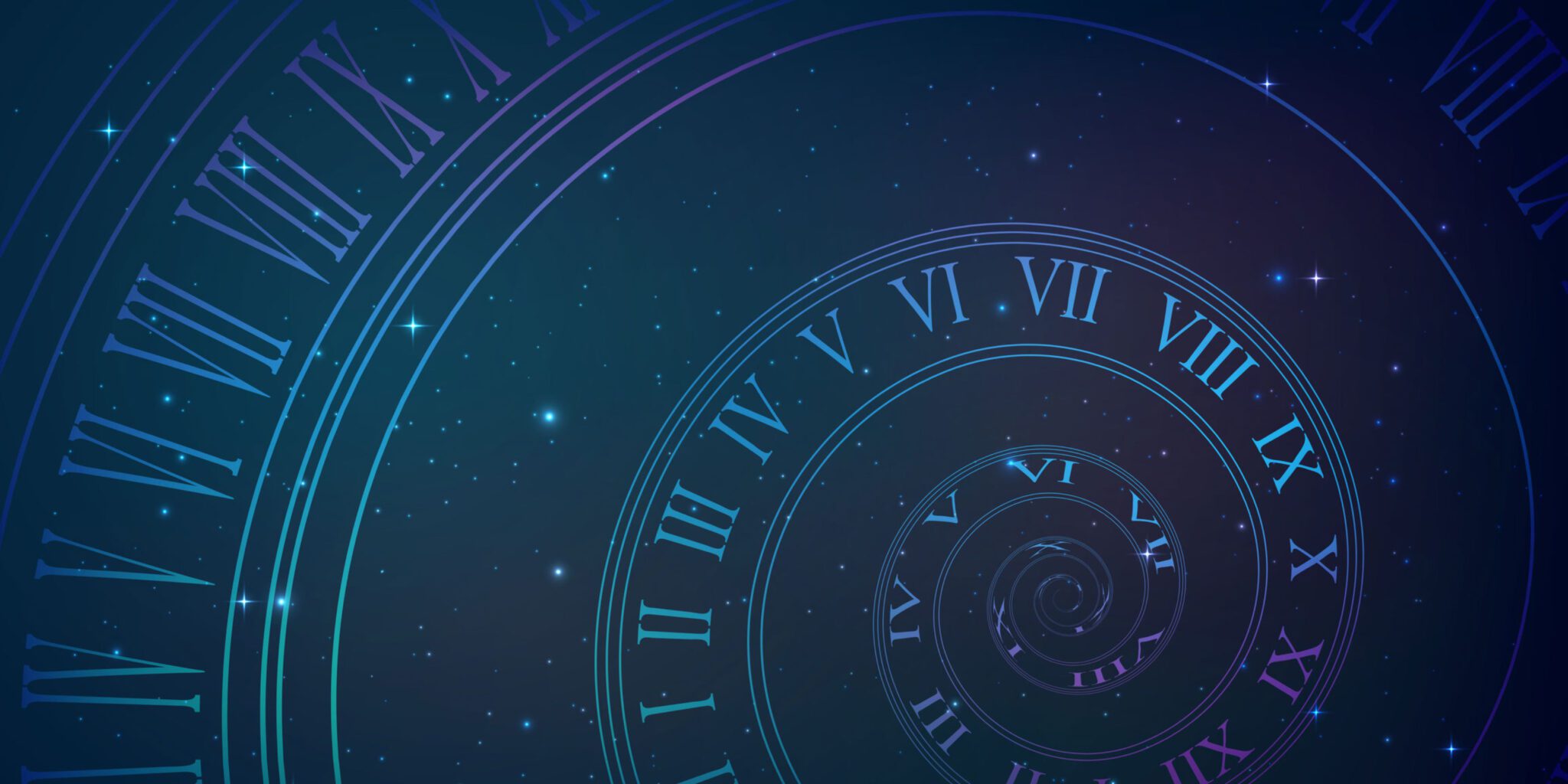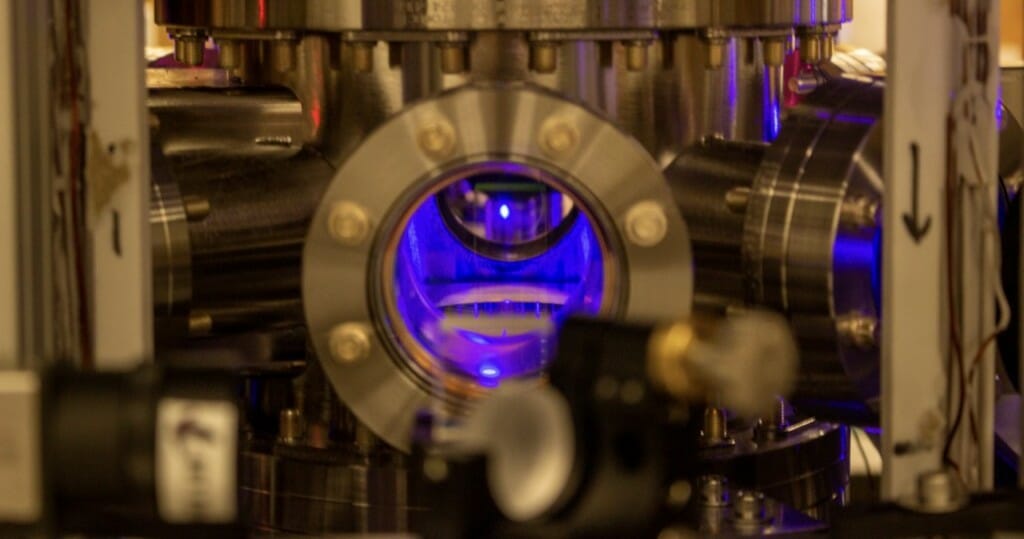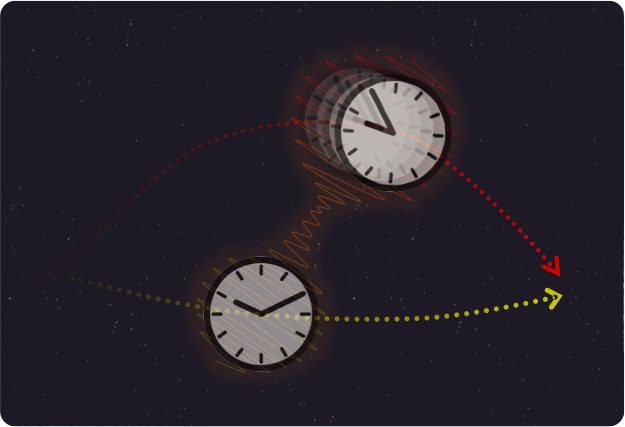Time, for Tanya Zelevinsky, is very much of the essence. At her physics lab at Columbia University in New York City, she is building a version of an ‘optical lattice clock’ — a device that can reach such unprecedented accuracy that it would lose only one second over millions or even billions of years.
Zelevinsky is interested in more than just extreme punctuality, however. She and her colleagues, along with other groups around the world, are using such precise timekeeping mechanisms to test the foundations of reality. “In the entire lifetime of the known universe, these clocks would be off by less than a second,” she says. “That means they can be used to test for subtle changes to the fabric of the universe, over its lifetime.”
Probing such puzzles has traditionally required vast networks of physicists and engineers, often taking decades to construct huge-scale particle accelerators, telescopes or massive experiments that cost millions or even billions of dollars. Think of the discovery of the Higgs boson—the particle that gives mass to others—at the Large Hadron Collider, the first observation of a black hole by the Event Horizon Telescope Collaboration or LIGO’s detection of ripples in space time known as ‘gravitational waves.’ Those achievements have been rightly celebrated. They have also continued to provide evidence in support of our leading models of reality: the Standard Model of Particle Physics, which is based on quantum theory and describes the tiny realm of subatomic particles and the forces between them; and Einstein’s theory of gravity, general relativity, which explains the motion of huge masses, such as stars and planets.
But there remain conundrums that these stalwart theories do not address.
For one thing, physicists cannot explain what happens when huge masses are squashed into tiny regions, such as at the moment of the Big Bang or in the heart of a black hole.
In these arenas, both quantum theory and general relativity should apply; however, physicists have struggled to combine them into a working theory of “quantum gravity.” Astronomers are also confused about the identity of most of the mass in the universe, which seems to take the invisible and as-yet-unidentified form of “dark matter.”
Physicists have proposed a variety of candidate models to tackle these mysteries; some predict a breakdown of gravity on tiny scales, others the existence of new particles and forces. Testing these ideas is tough, however. “The accelerator approach, giant telescopes and big collaborations are a really healthy way to try to push those boundaries,” says Aamir Ali, the John Templeton Foundation’s math and physical sciences program officer. “But it’s not clear how much bigger a telescope or accelerator we can build.”
Optical lattice clocks exemplify a complementary table-top approach, in which small-scale experiments are being used to test a diverse range of possible deviations from standard physics. “There is an elegance and precision in table-top techniques that hold the potential to find small discrepancies in empirical findings,” says Matt Walhout, the John Templeton Foundation’s VP of Natural Sciences.
Shimon Kolkowitz, who heads up a team working on optical lattice clocks at the University of Wisconsin-Madison, echoes the advantages of thinking small. “Our experiments need a single room, a handful of people and two tables and they can be built from scratch in a couple of years,” he says. He and his colleagues are now testing Einstein’s general relativity in a new regime, using ultra-precision timekeeping.
Perfect Timing
All clocks need regular ticks to measure time. A grandfather clock uses a pendulum, while an analog wristwatch relies on a quartz crystal that vibrates at a precise frequency. But even the best-performing quartz oscillators can lose a nanosecond (one billionth of a second) each hour. Global positioning systems require on-board atomic clocks that are so precise they only lose a second every 10 million years. Optical lattice clocks are based on the same principle as atomic clocks but provide the next generation of accuracy.
Standard atomic clocks are built using clouds of atoms, usually caesium or rubidium. Within every atom, electrons swarm around the central nucleus, confined to discrete orbits. Bombarding these atoms with microwave light of a specific frequency from lasers can cause an electron to jump to a higher orbit. Once this jump has been confirmed, the laser frequency can be used in turn to set a timing standard.
But even state-of-the-art caesium clocks are sloppy compared to optical lattice clocks, the best of which would lose only a second in 15 billion years. Kolkowitz’s team uses strontium atoms that are housed at ultra-cold temperatures within a vacuum chamber and then struck with optical light, rather than microwaves, to excite electrons to jump. “That little blue spot is one of the coldest places in the universe,” says Kolkowitz.
-

Image provided by Shimon Kolkowitz
Since optical light has a frequency that is 100,000 times higher than that of the microwaves used in traditional caesium atomic clocks, the ticks of the optical lattice clock are mindbogglingly faster. And, as their name implies, within these clocks, many thousands of atoms are arranged in a lattice, allowing for even greater accuracy. “You can picture the lattice as a stack of blueberry pancakes, with the blueberries as atoms,” says Kolkowitz.
Kolkowitz has already used the set-up to investigate Einstein’s relativity. Prior to the 20th century, physicists had assumed that time was absolute, such that two perfect clocks would tick at the same rate no matter where they were in the universe, or how they were moving.
Einstein realized, however, that both gravity and relative motion can affect the rate at which time flows. Thus two clocks held at different heights above the Earth should tick at slightly different rates.
Stunningly Kolkowitz’s group has demonstrated this gravitational effect using two different optical lattice clocks, held in the same chamber, and kept just 2.5 millimeters apart. “This is amazing,” says Kolkowitz, given that relativity is usually used to describe objects the size of planets and stars. “Here we can see relativity at the length scales of the thickness of a penny.”
Shrinking Scales
Kolkowitz is not surprised at the result because physicists did expect relativity to hold at the millimeter scale. But it’s not so clear what will happen to gravity if the team can push further. “The dream is to shrink down to the quantum scale, where our understanding is not so solid,” Zelevinsky says.
Intriguingly, it may soon be possible to bring quantum qualities into the gravitational mix. Just over a decade ago, Magdalena Zych, a quantum physicist now at Stockholm University in Sweden, and her colleagues proposed a novel table-top test that could probe the interplay between quantum phenomena and gravity. This was surprising because it had been widely assumed that no feasible lab experiment could probe both at the same time. Their idea hinges on one of the many oddball effects allowed by quantum physics. In particular, quantum physics says an atom can be placed into a ‘superposition’ of being in two places at the same time. This superposition can survive until someone measures the atom, which forces the atom to pick a location and snap into it.
If an atom can act like a clock, Zych pondered, what would happen if you put one of these clocks in a quantum superposition of being at two different heights or traveling along two different paths at two different speeds at the same time? “Now the clock is experiencing two different times and it is in a quantum superposition of being in two places at once,” Kolkowitz says.
Kolkowitz plans to realize the clock superposition in his lab, but admits it will be a difficult feat. “It’s incredibly hard to do and we’re still a few years away,” he says. Zych is excited nonetheless. “We were quite bold in thinking of this as an actual experiment that could one day be done,” she says, adding that she is staggered that it might be performed relatively soon: “The development of experimental techniques has just been so fast!”
While such tests would not provide a test of a full-blown theory of quantum gravity, it could help physicists to solve the mystery of why superpositions break when measured—and thus why humans and tables can’t be in two places at once, even though atoms can. What mechanism causes the quantumness of a system to disappear or ‘decohere,’ so we never experience quantum weirdness in everyday life?
The clock experiment could provide some clues. According to standard quantum theory, the strength of the superposition should wax and wane; the periodic rise and fall should be related to the ticking of the two versions of the superposed clock, which will go in and out of phase. But there are rival theories to quantum mechanics that argue that gravity plays an even more significant role and induces quantum systems to decohere, breaking their superpositions. “If decoherence is seen to happen faster than predicted by standard quantum theory, that could be evidence for these rival models,” says Kolkowitz.
And if decoherence doesn’t happen at all? That would imply that some fundamental aspect of our understanding of quantum theory or basic relativity is wrong. “That would be quite wild!” says Zych.
Good Vibrations
Zelevinsky’s group is chasing signs of different but equally groundbreaking effects using their optical lattice clock. For instance, “Some theories that go beyond the Standard Model predict that a new force appears at short distances,” says team member Brandon Iritani.
Rather than using a cloud of strontium atoms, Zelevinsky’s clock is built using clouds of strontium molecules. Each molecule in the cloud contains two individual strontium atoms joined by a bond, and these bonds start to vibrate when the cloud is bombarded by optical light. “You can think of the molecular bond as like a spring connecting two balls—the two strontium atoms,” says team member Mateusz Borkowski. The ticks of the clocks are then determined by the vibration frequency of the bonds that hold the atoms together in the molecules. “If a new force appears around the length scale of a molecular bond, it will affect the vibration of the spring, and thus the ticking of the clock,” adds Iritani.
Other extensions to standard physics suggest that what physicists currently assume to be fundamental constants of nature are perhaps not as constant as they seem, but actually subtly drift over eons. Since state-of the art optical lattice clocks lose less than a second over the age of the universe, they could pick up such a tiny drift. One of these supposed constants is the ratio of the mass of the electron to the mass of the proton. “This is like the spring staying the same, but the mass of the two balls changing,” again affecting the vibration frequency, says Borkowski. “Our clock is particularly sensitive to this.”
Of course, it may be that none of these hoped-for deviations from standard physics are found. But the experiments provide a cost-effective way to rule them out, or constrain the regimes in which they might appear, which is itself useful to physicists designing the next big-scale experiment. “They allow relatively inexpensive trial runs of even crazy ideas,” says Walhout.
This is part of the reason why the John Templeton Foundation recently joined forces with three other funding agencies—the Gordon and Betty Moore Foundation, the Simons Foundation and the Sloan Foundation—to call for proposals for more table-top experiments. “We can push the envelope on different fronts,” says Ali.
While small-scale tests cannot compete with giant billion-dollar experiments on every level, Zelevinsky says their power should not be underestimated. “Table-top experiments are more flexible than big colliders and easy to adapt as our understanding evolves,” she says. “We are hoping that by working hard on improving our sensitivity, we can actually look deeper into the universe, and at tinier and tinier scales, and ultimately further back in time than more conventional experiments.”


